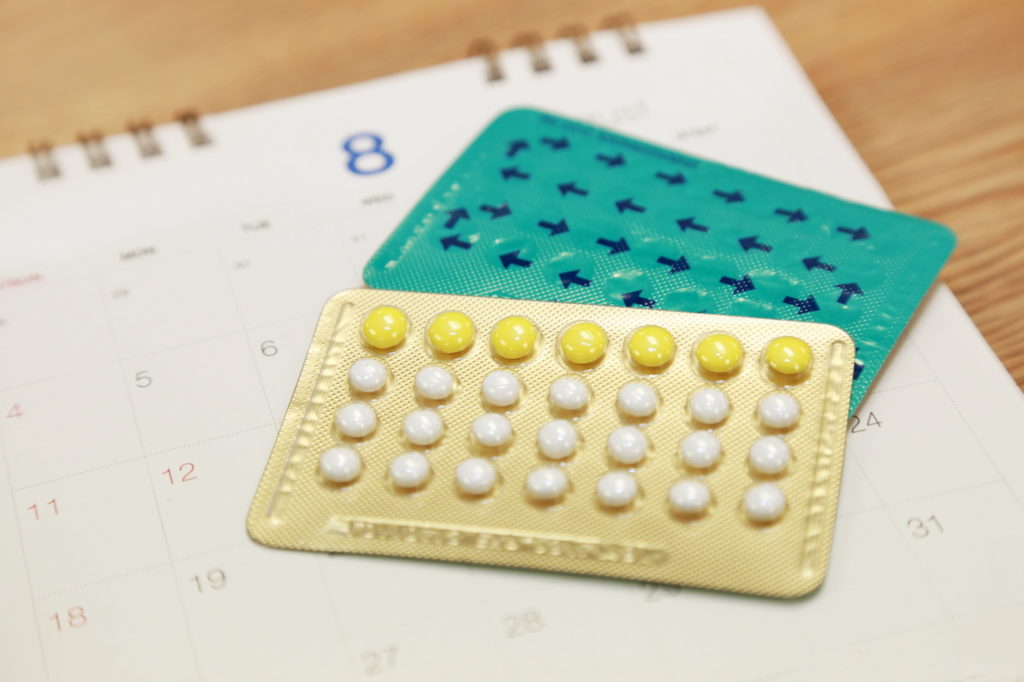For girls, coming of age in the modern West includes many rites of passage: shaving their legs, learning to drive, going to prom. For many, that list includes starting to use birth control. According to a 2017 government report, 37 percent of women aged 15 to 19 use birth control, and among all women using birth control, the pill and LARCs (long-acting, reversible contraceptives) are the two most common types of contraception after female sterilization. But excepting one type of IUD, these contraceptives rely on synthetic hormones to prevent pregnancy. These hormonal types of birth control seem straightforward and easy to use, but don’t be fooled: there’s more to these magic “cure-alls” than most women realize.
Consider the following little-known facts about birth control.
- “Hormonal” birth control simulates hormones—it doesn’t stimulate.
Many women are under the impression that the pill “causes” their period or that it tricks their body into not getting pregnant by producing hormones. In the book Period Repair Manual, Lara Briden explains that contraception does not provide the same hormones that your body naturally produces. The pill, Mirena IUD, the patch, Depo-Provera, and Nexplanon implant contain synthetic hormones that not only suppress ovulation, “thereby switching off your only source of estrogen and progesterone,” but also cause many effects that are the opposite of what your natural hormones would do. These types of birth control contain progestins, not be confused with the natural hormone progesterone. Progestins abort pregnancy and increase the risk of fatal blood clots, whereas progesterone promotes embryo implantation and pregnancy.
Briden says that the phases of bleeding caused by birth control pills are not true menstrual periods, but “pharmaceutically induced bleeds which are arbitrarily coordinated into a 28-day pattern (solely to reassure you that your body is doing something natural).” Fact check: it’s not.
Start your day with Public Discourse
Sign up and get our daily essays sent straight to your inbox.- Hormonal birth control can cause many health problems.
The possible side effects of hormonal contraceptives include the loss of libido, rashes, discoloration of skin, hair loss, changes in weight, heavier or more painful periods, nausea, migraines, mood changes, and depression. My personal experience with the pill included nausea, longer and heavier periods, loss of libido, and emotional meltdowns, which is mild compared to the experiences of many women I know. Then there are yeast infections, liver malfunction, gastrointestinal pain and bloating, vitamin deficiencies, and vision impairment. The risk for breast cancer is three times higher for users of high-estrogen pills, and there have also been thousands of lawsuits filed against manufacturers of birth control pills for heart attacks, blood clots, strokes, deep vein thrombosis, pulmonary embolism, and gall bladder disease. A systematic review of the scientific literature indicates that “between three and four hundred women die every year in the United States due to their choice to use hormonal contraception.”
Most women won’t die from using hormonal birth control, but many have convinced themselves that the negative side effects they experience, however “mild” they may be, are a necessary evil. Thankfully, this is not true! There is another option.
- There is a non-hormonal method of birth control that does not produce any side effects.
Many methods of non-hormonal birth control exist, such as the copper IUD, the diaphragm, spermicide (often combined with the Today sponge), and everyone’s favorite little piece of rubber. However, the copper IUD can be expensive and can cause heavy bleeding and pain, the diaphragm is virtually impossible to obtain in the United States, spermicide is toxic, and condoms are unappealing to many.
But there is another method of birth control called the Fertility Awareness-based Method (FAM). FAM works through observing bodily signs to know when you are and are not fertile, and then abstaining from sex or using a barrier method of contraception when you are. The three most commonly observed signs are cervical mucus, basal body temperature, and cervical position. A fourth sign used by some methods of FAM is hormonal levels, which can be tested using fertility monitors or simple ovulation test strips. These biomarkers change in predictable and observable ways throughout a woman’s menstrual cycle. If you know how to “read” the signs, you can know whether you are fertile or not.
FAM requires diligence and self-control, and it can be hard to learn at first. But, in my experience, the more you learn about your own body, the less you ever want to go back to anything else. It becomes easy and, dare I say, fun. FAM is not only a method of birth control, it is also an education. It gives women incredible understanding of their own bodies—something that no pill could ever do. FAM also has the potential to improve relationships. Toni Weschler, MPH, author of “Taking Charge of Your Fertility,” describes it this way: “Unlike most other methods, FAM affords men the opportunity to lovingly and actively share in the responsibility of conception.” The website Natural Womanhood reports that couples using FAM have a more intimate and fulfilling sex life, and their divorce rate is less than 5 percent.
- The Fertility Awareness Method is not the same thing as the rhythm method.
When I was about to get married, I discussed birth control options with many family members, doctors, and friends. Once I had decided on FAM, the response I received from people often went something like this: “Oh, you’re doing that? Good luck!” Even though FAM has been around for a long time, people still seem to think it’s an ineffective method that only Christians use. One woman told me, “That’s the kind of birth control that so-and-so from our church uses. And they had three kids on it.”
On the birth control fact sheet provided by the US Department of Health and Human Services, FAM is not even listed, which no doubt contributes to the negative stigma surrounding it. The rhythm method, however, is listed—second to last on the scale of effectiveness. But, contrary to popular belief, FAM is not the same thing as the rhythm method.
Let me explain. FAM is sometimes used as an overarching term to encompass all forms of natural methods to prevent pregnancy based on observation and charting of scientifically proven fertility signs. Natural Family Planning (NFP) is a form of FAM, but it differs in principle in that it requires abstinence during the fertile phase. NFP can be considered a way of life rather than just a practical means to avoid pregnancy, and it is used by many religious couples.
The rhythm or calendar method is often conflated with NFP and FAM. As Toni Weschler explains, the rhythm method is an antiquated method of birth control “based upon a strictly mathematical computation of the average of a woman’s past cycle lengths, with absolutely no daily observations to determine impending ovulation of each individual cycle.” In other words, the rhythm method makes ovulation predictions based on the past without taking the present into consideration. But women’s cycles vary from month to month, which is why predicting your fertility based on what happened last month can be very unreliable. Merely measuring the total length of the cycle is also unhelpful, since women’s luteal phase length differs. No matter what textbooks may say, not all women ovulate on day fourteen of a twenty-eight-day cycle. The Mayo Clinic reports that 24 percent of women get pregnant in their first year of using the rhythm method. FAM, however, recognizes that every woman and every cycle is different. When used correctly, the average effectiveness of all types of FAM is greater than 95 percent. One particular type of FAM, called the Sympto-Thermal Method, has a staggering rate of effectiveness with typical use—98 percent. And the rate of success only increases with correct use.
The Bottom Line
The pill has long been heralded as a means of providing women a chance at equality. Ironically, it is marketed as a one-size-fits-all pill for many women’s health problems, but fertility is not a health problem.
How much longer are we going to believe the lie that women need to suppress or even harm their healthy, properly functioning bodies in order to be successful women? How much longer are we going to let pharmaceutical companies and abortion providers determine what is best for women? Far from “empowering” women, those who push hormonal contraception belittle women by promising to “cure” an absurdly wide variety of ailments and then convincing them that the negative side effects are a necessary sacrifice to achieve equality. It is time women learned the truth: the pill is not your friend, and there are alternatives to hormonal birth control.














